Work with Tasks
👨🔧 Here is the guide for workers about how to work with tasks, including annotating, reviewing, and acceptance. In addition, Task Admin & Inspector can also revise or perform manual QA on the data in a task.
Under the My Tasks - > To-do tab, workers can see the tasks assigned to them. Reviewers, annotators, and inspectors can click the task card entry on the 'To-do' page to perform task assignments.
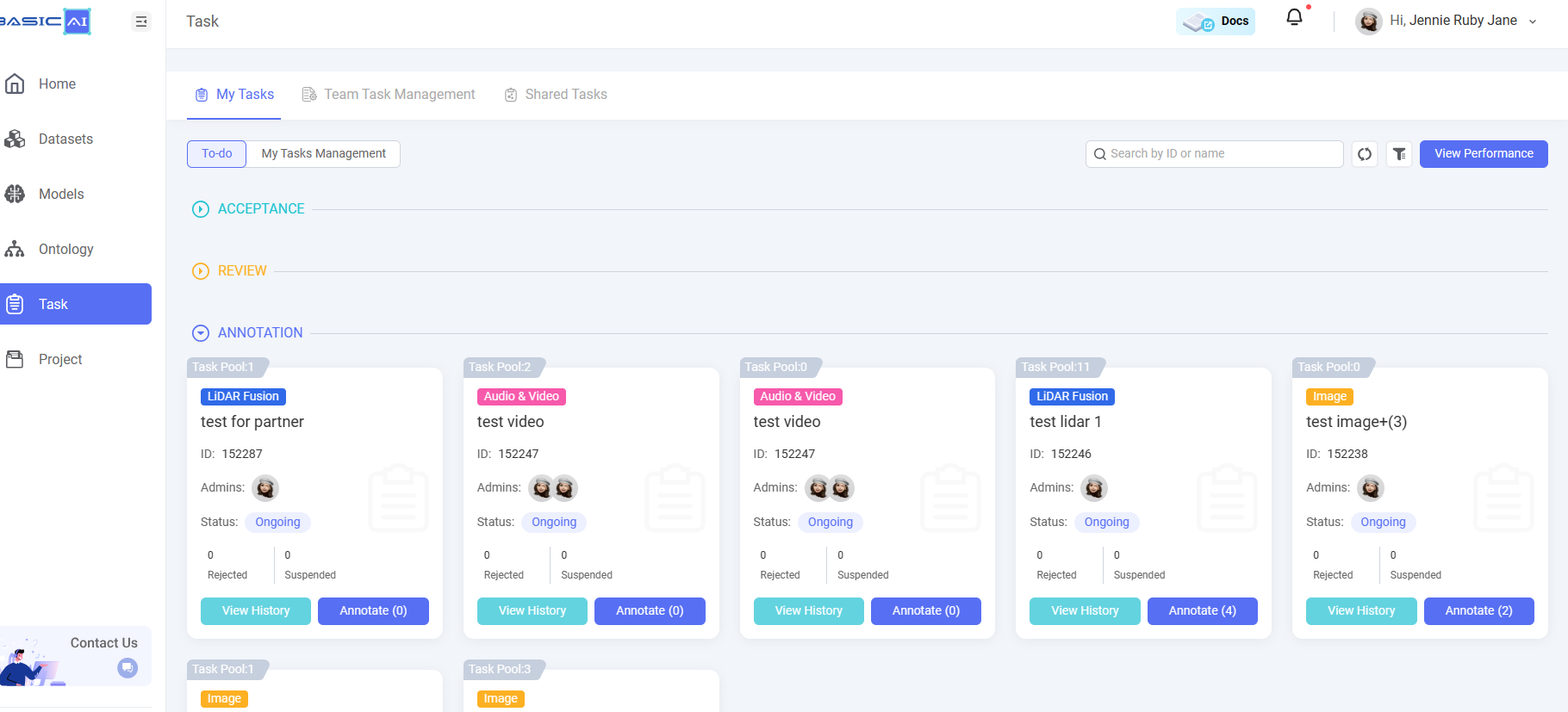
Firstly, let's get familiar with the 'Task Card' concept on BasicAI and what the card contains. Then, for different worker roles (Annotator, Reviewer, or Inspector), you can choose to directly click on the corresponding content titles in the Table of Contents bar on the right side of this guide and read the contents, which will help you start to conduct your work quickly.😉
Task Card
Workers can deal with a task and get adequate information about the task through the Task Card. Apart from the Annotate, Review, and Inspect entries for workers, the task card also displays information types or buttons listed in the table below, although the display will differ according to the specific role of a worker.
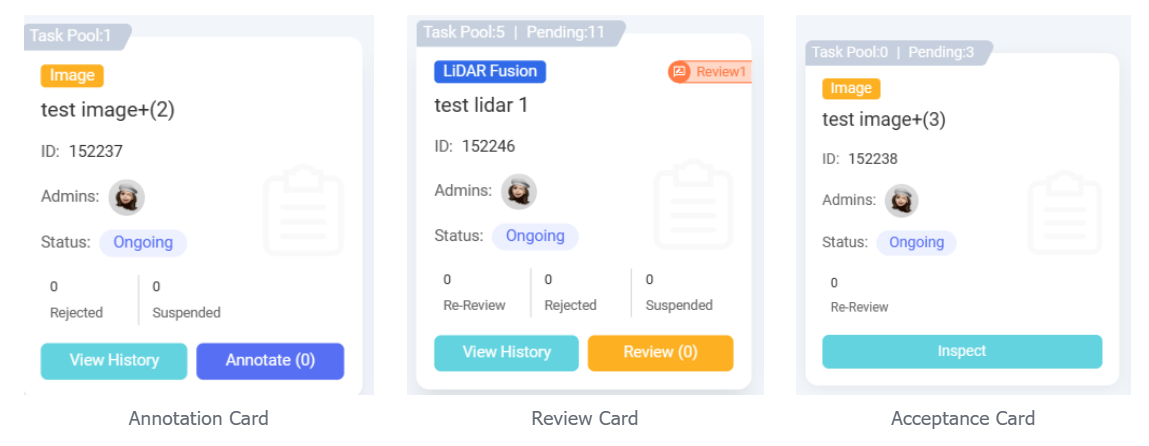
| Display Contents | Descriptions | |
|---|---|---|
| Task Pool: xx | Number of data which you can claim at the moment | |
| Pending: xx | Indicates how much data have not been submitted to the current stage | |
| Data Type | Data type of the task | |
| Admins | Click on the avatar to check the info of a Task Admin | |
| Status | Task status, which displays 'Ongoing' or 'Paused' | |
| Re-Review | Number of data that need to be re-reviewed. When a reviewer receives the modified data from the same annotator again, the data will be in the Re-Review status. | |
| Rejected | Number of data that are rejected by others. Once a reviewer or an inspector has rejected data to the original annotator on the tool page, then the rejected data count will add 1 on the annotation task card of that annotator's To-do page. The annotator can click the pen icon above Rejected to enter the rejected data to annotate again, as shown in the image on the right. | 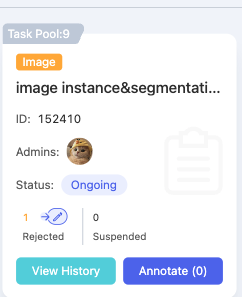 |
| Suspended | Number of data that are suspended by a worker. When a worker is not sure of the answer when performing data operation, he/she can suspend the data on the tool page, and then the suspended data count will add 1 on the task card. In addition, you can go back to the task card and click the pen icon above Suspended as shown in the image on the right, if you want to move the data back to the task pool. | 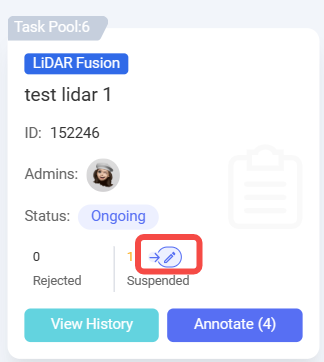 |
| Review Stage | When a task is configured with multiple review stages, the review card will show which review stage this task is at right now in the form of an orange banner on the card. | |
| View History | Click View History to show the data stage details of the task. |
Annotate
Step 1: Annotators can click the Annotate tab on the task card to start Data Annotation.
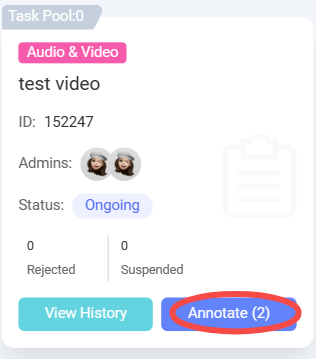
Step 2: After entering the annotation page, click the Annotate button to annotate an individual piece of data, or click Select All in the selection box at the upper left corner, and then click Annotate All in the upper right corner for batch Data Annotation.
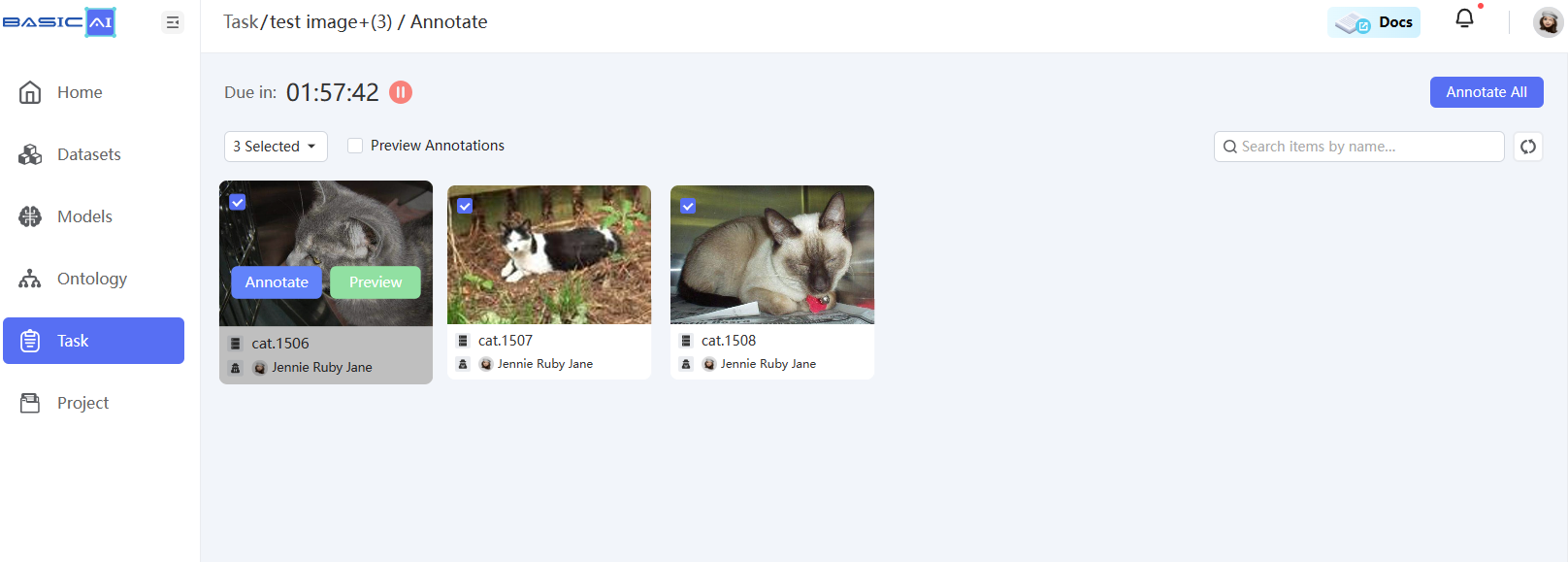
'Due in' CountdownThe 'Due in' bar at the top left corner of the page displays a countdown mechanism to the data-submission deadline. Click the
pausebutton to pause the countdown, and the pause duration will start counting after pausing.
Step 3: After entering the annotation tool page, you can annotate data here using different tools according to specific data types. The toolbar is on the left side of the page, and operation buttons such as save, suspend, and submit can be found in the upper right corner.
For more information about how to use the tools to annotate different types of data, please click Annotation Tools Commons, LiDAFusion Tool, Image Tool and Audio & Video Tool.
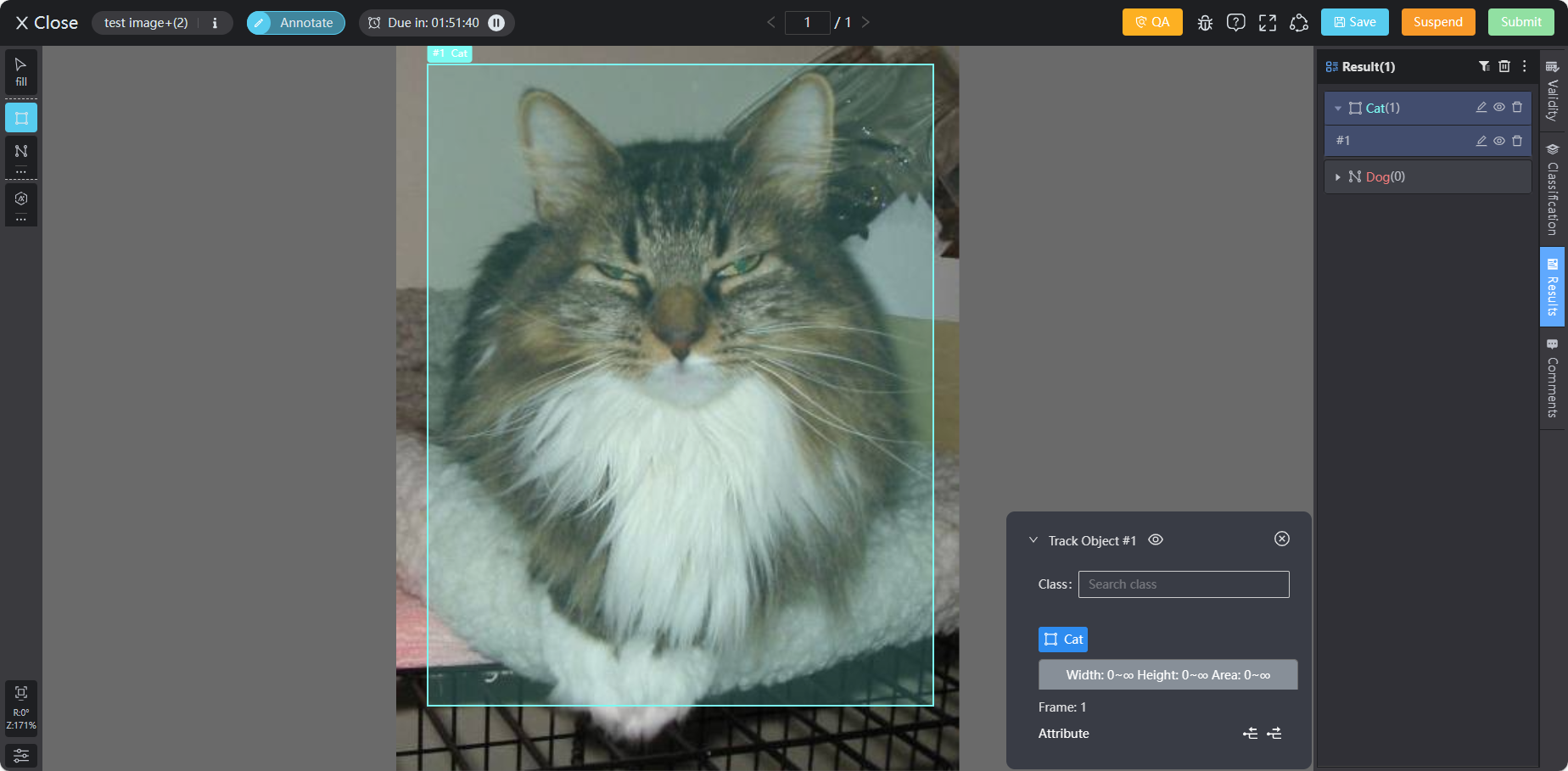
Review
Step 1: A Reviewer can click the Review button on the task card to start Data Review.
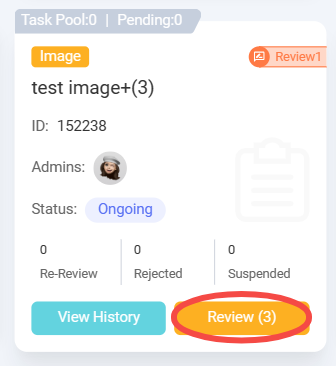
Step 2: Enter the data review page, click the Review button to review an individual piece of data, or click Select All in the selection box at the upper left corner, and then click Review All in the upper right corner for batch Data Review.
On this page, reviewers can filter an annotator's tasks, click
Reclaimto release the annotator's tasks, and reclaim a new batch of data.

Step 3: On the review tool page, reviewers can pass, reject, modify results, suspend, and leave comments etc.

- Pass: If you think the previous annotation result is correct, click
Passto move the data to the next stage. - Modify: Click
Modifyto enter the modification mode, edit the previous annotation result or add new objects. - Reject: Click
Rejectto pop up the rejection option box. You can choose to reject the data to the original annotator or to the task pool, keep the original annotation result or clear the result, and fill in the reason for rejection.

- Comment: Click the comment icon on the left side of the toolbar, select a place in the data to comment, select the comment type and fill in the comment content:
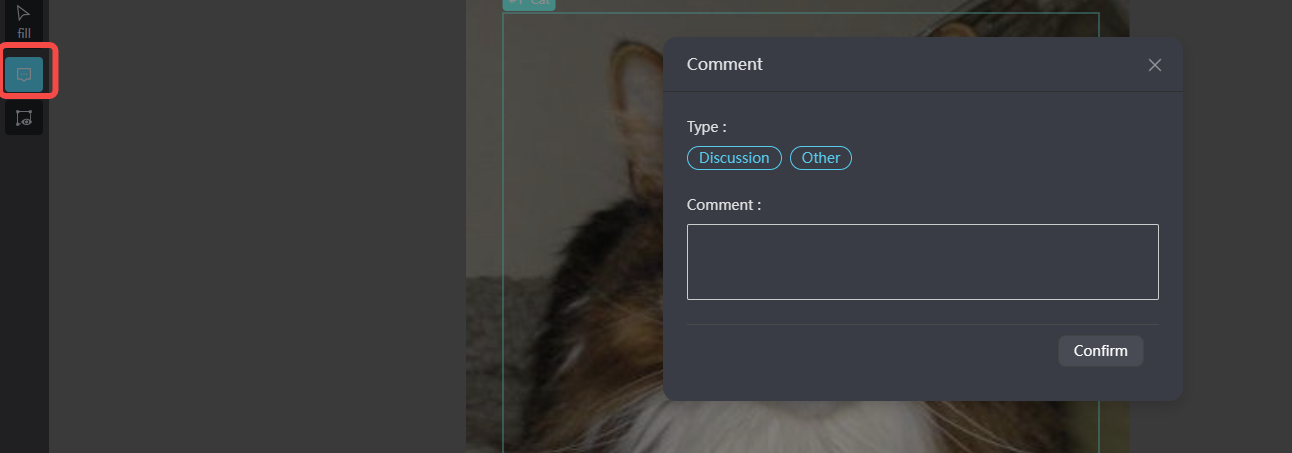
Accept
Step 1: Inspectors can click the Inspect button on the acceptance task card for Data Acceptance.
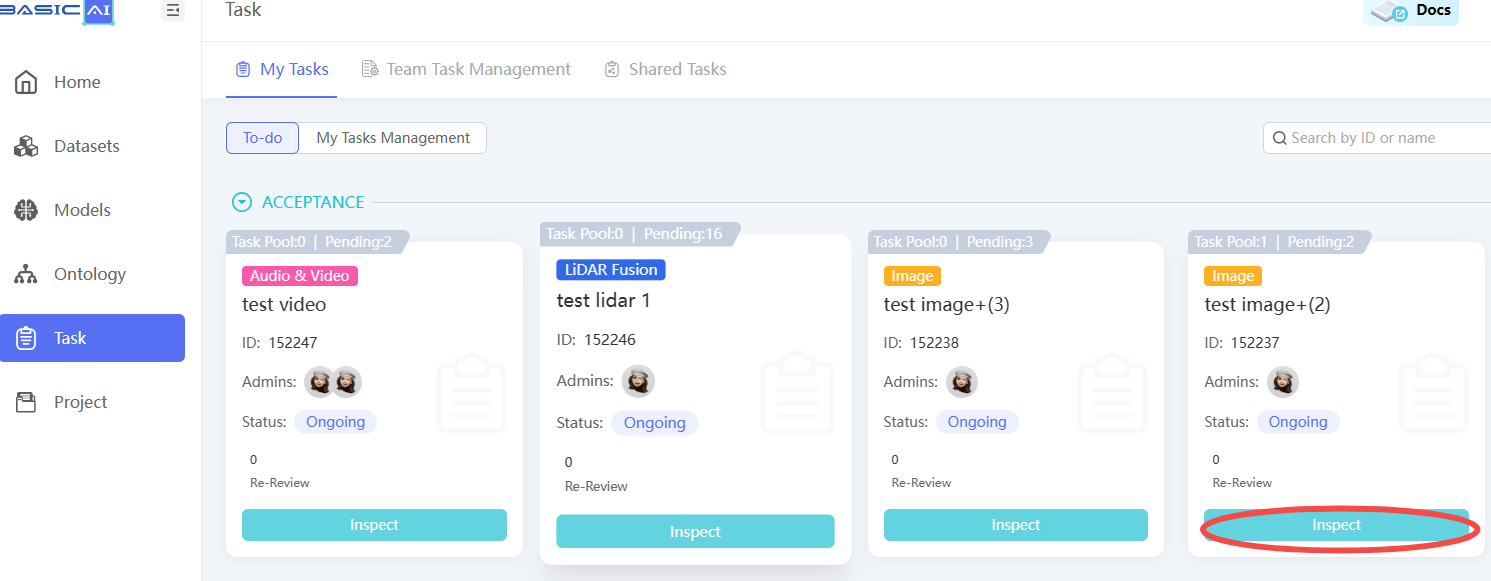
Step 2: After entering the acceptance page, you can operate on the single data card, or click View all in ACC after selecting all in the upper left corner to enter the acceptance tool page. Sorting and filtering data is also supported on the right section of this page.

Step 3: Specific buttons on the data card and the page:
- Preview: Preview data on the current page.
- Info: Check the information about the data and its stage details.
- View in ACC: Click
View in ACCand enter the tool page as an inspector. The page display and operation logic are similar to the review tool page, but the upper left corner will show that it is in the 'Acceptance' stage, and clickingAcceptmeans to accept the data.
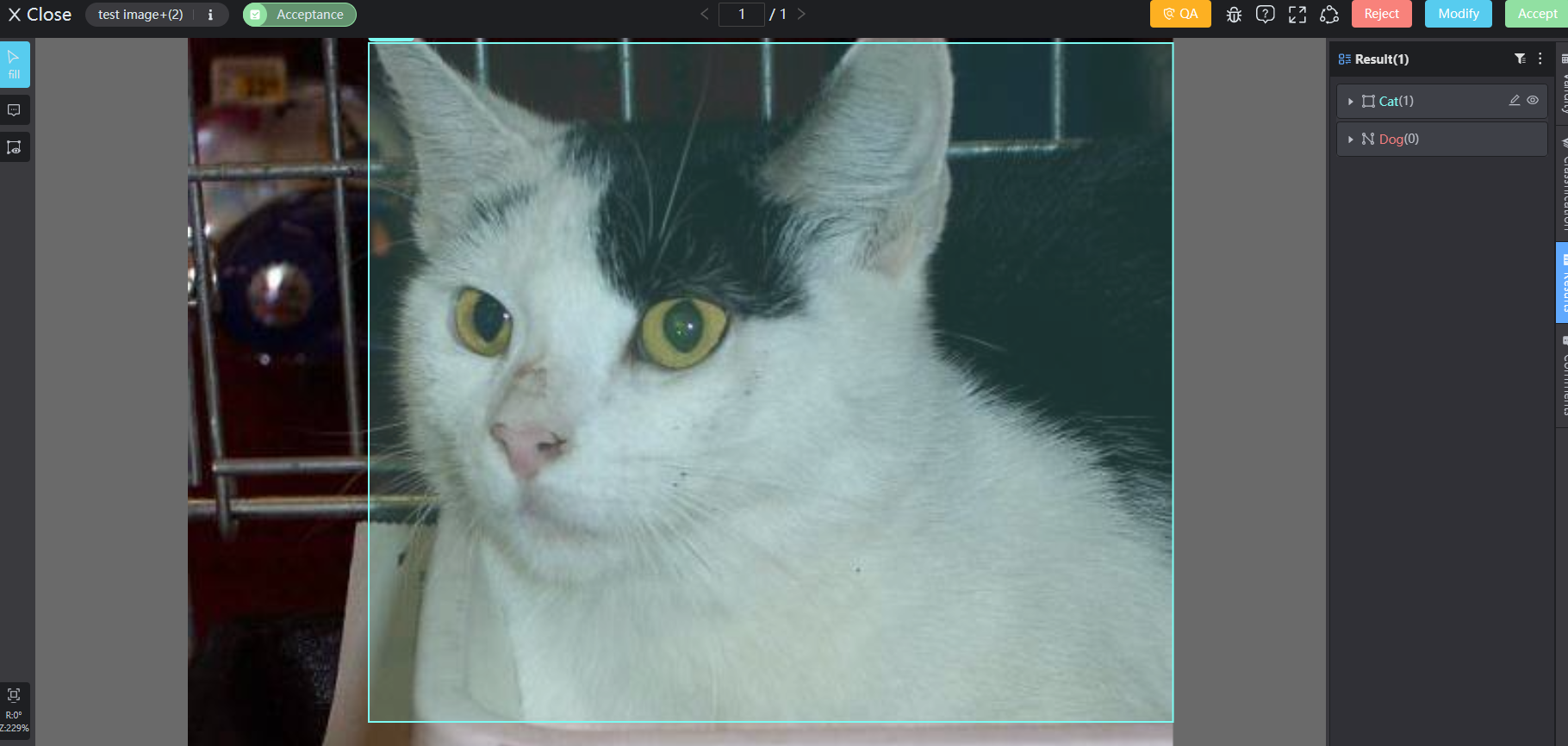
- Accept: Accept the single piece of data.
- Accept Task: Accept all the data in this task.
- Reject: Reject the single piece of data. After clicking, select which stage to reject back to, reject to the original annotator or the task pool, and fill in the reason for rejection.
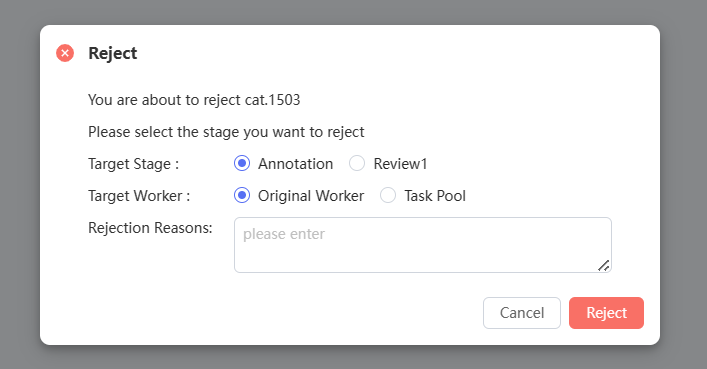
- Reject Task: Reject all the data in this task.
Revise
For Task Admin/Inspector, you can revise completed data on the 'Task-Data' page. There are two common scenarios where the Task Admin/Inspector will need to revise data:
- When the data are wrongly accepted;
- After the data are completed, if there are changes in your annotation requirements, annotators will need to re-annotate.
The consequences of revising data are as follows:
- The results synced to the Dataset will be deleted, while results in the task will not be affected.
- The performance of the data will be reverted.
NoteTo ensure your rights, we currently only allow individual data revision. If you require bulk revision, please contact us.
Task Admin/Inspector can find the Revise button on the single data card under the 'Task-Data' tab. After clicking Revise, you need to select the target stage for revision and fill in the reason for revising.
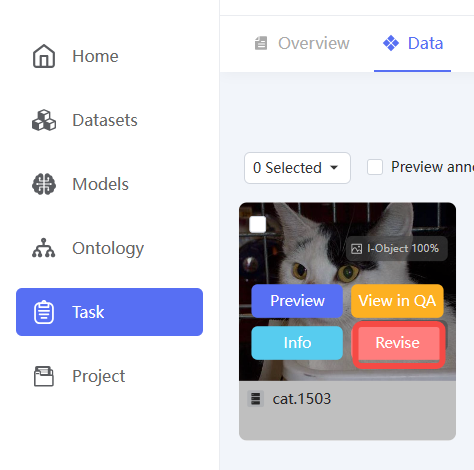
View in QA
For Task Admin/Inspector, click View in QA under the 'Task-Data' tab to manually QA the completed data. After entering the QA page, you can either click the comment icon on the left to leave comments, or click the Revise button on the top right corner to revise the data on this page.
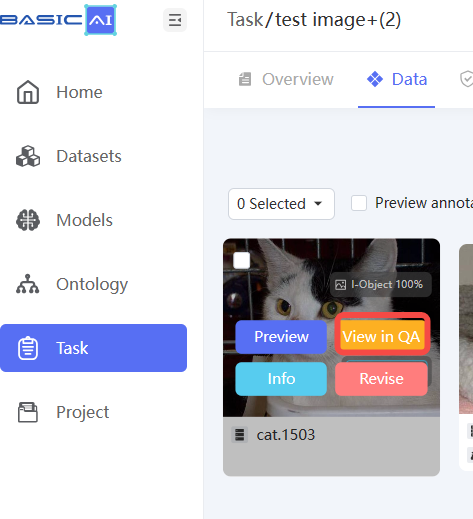
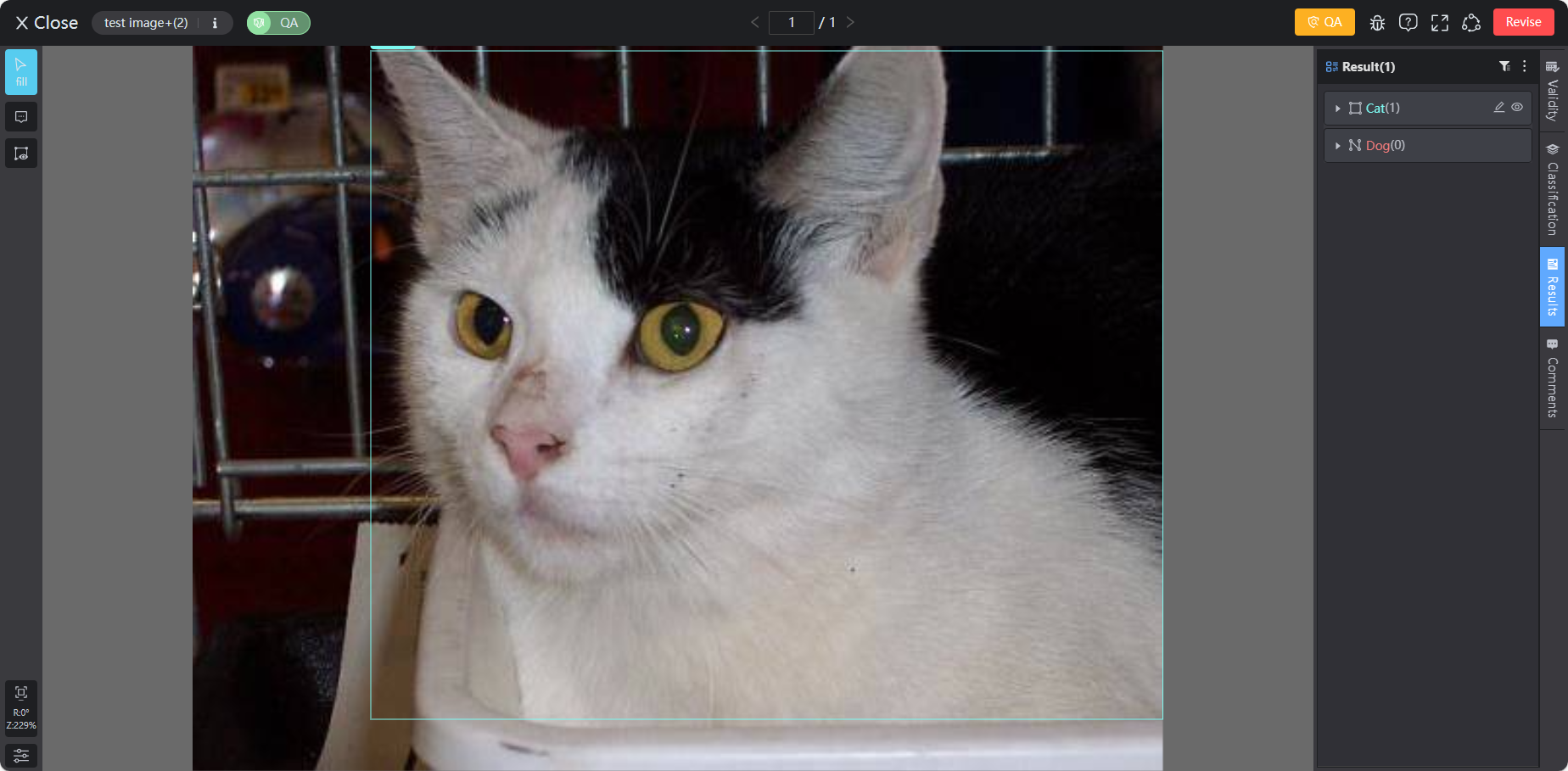
Updated 8 months ago